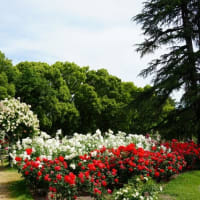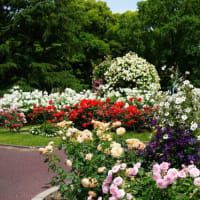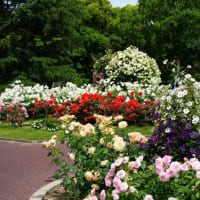The saying by folk art scholars that "white in Joseon is the color of sorrow" is now a complete lie.
The following is from an article I found on the Internet earlier.
In 1429, during the early Muromachi period (1333-1573), Park Jin-sang came to Japan and issued the following restoration order.
According to the report, "Japanese farmers have established a water wheel," he had his student Kim Kyeong examine the "Law of the Wheel" and make a model, and reported the manufacturing methods of gilding (silver plating), zo-shi (papermaking), shu-hong, light powder, and other processes.
The reinstatement at this time also covered the actual state of Japan's monetary economy and the development of store commerce.
He mentioned technology in his report because he had been ordered by King Sejong to introduce Japanese technology, saying, "Japanese paper is strong and solid, and you should learn how to make it well.
Joseon missions to Japan in the 15th century recorded with surprise that Japanese beggars would beg for coins since Joseon was still in the age of barter and had no knowledge of money or commerce.
In contrast, the story of Park Jin-sang's visit to Japan more than a hundred years earlier, where he used a waterwheel to pump river water to his detached palace, is recorded in Tsurezuregusa (Dan. 51).
Considering that farmers installed the waterwheel, it is clear that there was a considerable technological gap between Japan and Korea at that time.
Therefore, as Korean history textbooks say, "Japan had a hard time learning technology"; it was the Korean side rather than the Japanese side.
It was not the Japanese who were "struggling to learn the technology," as the Korean history textbooks put it, but rather the Chosun.
As for the Koreans' struggle to introduce waterwheel technology, Kim Hong-jip wrote as late as the 1880s, "There is no irrigation system in Korea. There is no waterwheel either," lamenting the uncivilized nature of the country.
In other words, it took nearly 500 years in Joseon after Park Jin-sang came to Japan in 1429 to put a water wheel to practical use.
The following is from "Sound Argument" in Sankei Shimbun, 12/17/2008.
≪The "Jang Geum" is a hoax.
Recently, about one out of ten people I talk to at meetings are fans of the Korean historical drama "Jang Geum," Many believe that the story is a historical fact, and I want to correct them.
First, in the Joseon dynasty, if a girl served in the palace, she entered into a pseudo-marital relationship with the king and could not leave the court for the rest of her life.
They could not go in and out of the palace like Jang Geum.
In the Joseon dynasty, the drama is full of colors, but in reality, there are no colors in the private sector because of the lack of pigments.
It is why there is only white porcelain in Joseon while there are red paintings on ceramics in the Qing Dynasty in China and the Edo Period in Japan, and why people's clothes are white because they cannot supply their pigments.
The saying by folk art scholars that "white in Joseon is the color of sorrow" is now a complete lie.
Only the upper classes bought colored cloth from imperial merchants trading in China.
Unlike the Qing and Edo periods, the Joseon dynasty disliked technological innovation and could rule for 500 years with a low-level object economy, similar to North Korea today.
A Korean Confucian scholar in the early 19th century said, "(The poor state of our country) has no needles, no sheep, and no cars" (Jung Dong, "Day Yong-hen").
There were crude needles, but one had to buy needles from China to sew properly.
Chinese needles at that time were excellent, and Japan also imported them.
Sheep existed in Goryeo, conquered by the Mongols, but died out before long.
Cars did not exist until the influx of Western culture.
It is because they did not have the technology to bend wood.
That is why the Joseon dynasty had no barrels.
They could not even transport liquids to distant places.
Korea was such a country when Japan once protected it.
"■Domestic criticism of history textbooks as well
Korean scholars have recently begun to criticize Korean history textbooks.
The argument that Japan came to Korea, nipped in the bud of Korean modernization during the Joseon dynasty, and then plundered the country during the colonial period has reached the limit of unreasonableness.
Critics say, "The problem with this theory of plunder is that its empirical basis is not certain. Rice was not plundered by Japan but was exported to Japan according to economic logic, and the income of the entire Korean peninsula (as Koreans call the Korean peninsula), including the Japanese, increased accordingly" (Textbook Forum, "Alternative Textbook: Modern and Contemporary History of Korea," March 2008).
In retrospect, Korean history textbooks have not always been focused on nationalism.
In the early days, they plainly stated that "Japan won the Sino-Japanese War, the Treaty of Shimonoseki was signed, and Korea's independence was recognized" (*Saho, "Secondary World History," Eishi Bunka Sha, 1959) or that Korea was a "semi-vassal state" of Qing (Jin Shengjin, "High School World History," for 2nd and 3rd grades of senior high schools, Kyoyusha, 1962).
It was around the mid-1970s that South Korea turned aggressive, accusing Japan of forcibly imposing a protection treaty.
During the latter half of the Park Chung-hee administration, he began to secretly reflect on the fact that the colonial rule was due to the fact that they were not a people with the ability.
"Some media scouring for self-dealing
However, on June 26, 1982, the Japanese media reported erroneously that "invasion" had been rewritten as "expansion" into China in the textbook examination.
It was just when the Japanese government and the Japan Teachers' Union were in a significant dispute over the textbook certification system in Japan.
China and South Korea began to protest vigorously.
As a result, the Neighboring Countries Clause (November 24, 1982, Standards for the Examination of Books for Academic Purposes) was established. The Ministry of Education's 6th Courses of Study (announced in 1989) included a proviso: "Particular attention should be paid to Korea, which has a close relationship with Japan, and more emphasis should be placed on it than on the previous years.
Korean history textbooks, having lost the opportunity for reflection, became more and more self-respectful, as if in inverse proportion to Japan's masochistic view of history, and wrote, "However, Japan violated Asian countries more brutally than the imperialist powers, and caused World War II, which was a tragedy in the history of the 20th century. Such a tragedy resulted from the Japanese Korean power's aggression against the Korean Peninsula. Such tragedies began with Japan's occupation of Korea, which was caused by the destruction of friendly relations with neighboring countries" (Shin Chae-sik and Hong Seong-pyo, "High School World History," Pohdinjae, 1990).
In contrast to Japan's masochistic view of history is Korea's self-respecting view of history, which has distorted the relationship between Japan and Korea like a distorted mirror.
In the postmodern era, public opinion in Japan and South Korea no longer rises in anti-Japanese or atonement.
What is exciting is only some media and academics are scouring for self-dealing in the anti-Japanese market in South Korea and are also busy maintaining self-dealing in the Japanese atonement market.
(Hiroshi FURUTA).














